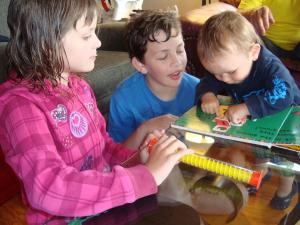
 We are social creatures. And just like in the animal kingdom, our survival depends on our ability to get along with others. Playing, in all its forms, is an important way of forging and maintaining relationships. As Dr. Stuart Brown, founder of the National Institute for Play says, the basis of human trust is established through play signals, both vocal and facial.
We are social creatures. And just like in the animal kingdom, our survival depends on our ability to get along with others. Playing, in all its forms, is an important way of forging and maintaining relationships. As Dr. Stuart Brown, founder of the National Institute for Play says, the basis of human trust is established through play signals, both vocal and facial.
This is apparent, even from birth. When a mother smiles at her baby, the baby responds. Such ‘serve and return’ interactions extend throughout toddlerhood and beyond, and as leading researcher Dr. Bryan Kolb explains in this video, they’re vital to a child’s development, brain growth and function:
Social Milestones
As your child grows, he or she will progress through different phases of social play. These are simply guidelines. If you have any concerns about your child, speak with your physician.
- Around the age of two, your child will mostly play by him or herself. This also continues at times throughout the preschool years.
- Between the ages of two and three, your child is likely to play near children, but won’t necessarily interact with them. This is called parallel play, and it serves as a bridge to more cooperative play that takes place later on.
- By the time your child is between four and six years old, he or she will begin to play with other children. This is where the lessons of empathy, and the importance of give and take relationships are learned.


